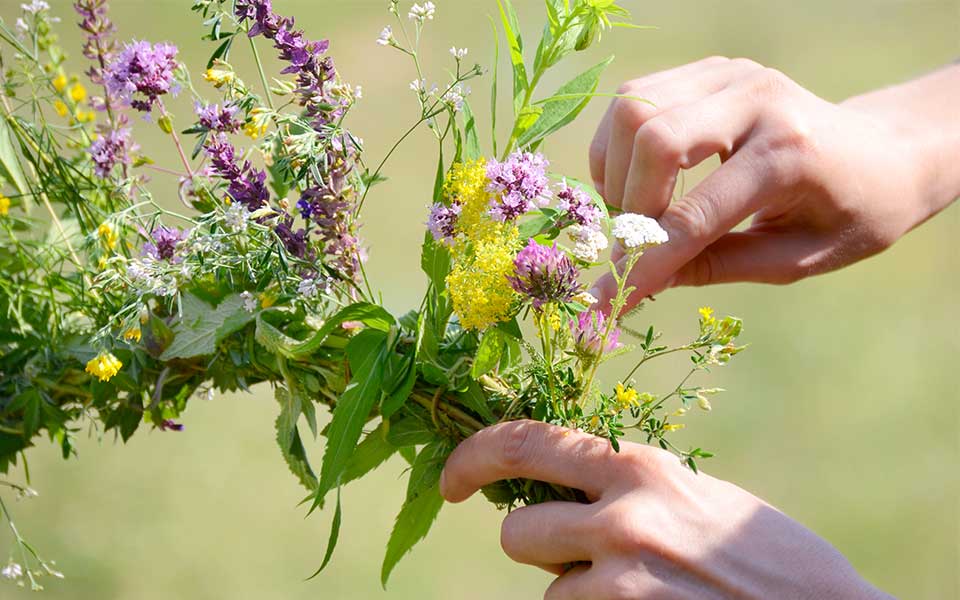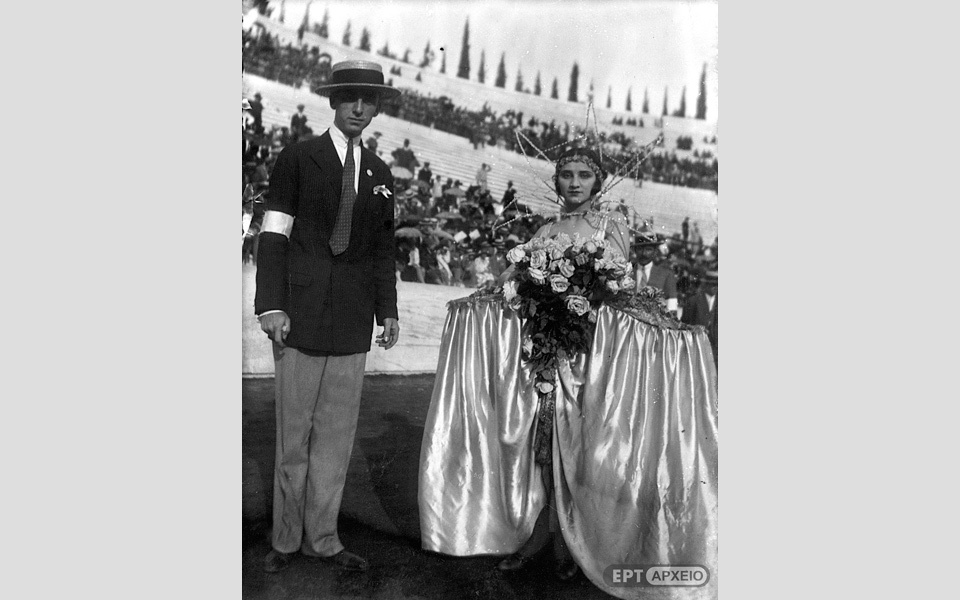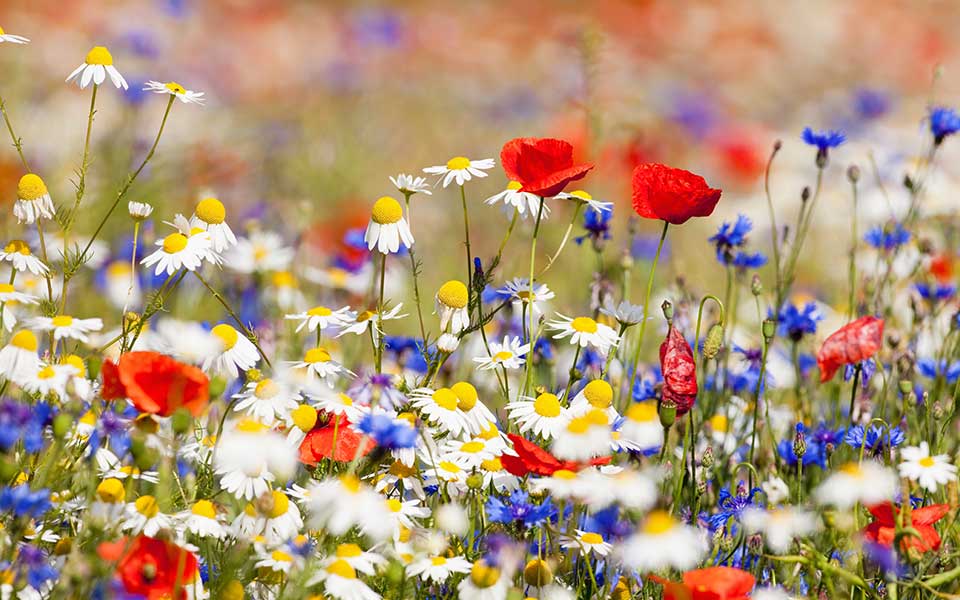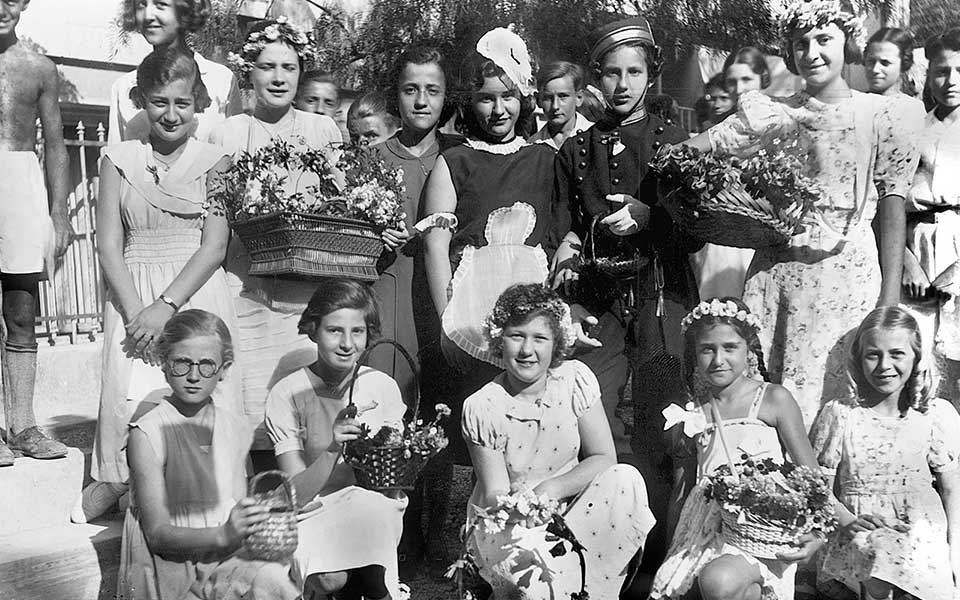For Greeks, May Day feels like the final bell on the last day of school. Young and old literally stream out of cities and towns to celebrate the official end of the winter period.
One of the few non-religious public holidays in the country, it is celebrated with armfuls of flowers. Daisies, poppies and dozens of other types of wildflowers that blossom in the Greek countryside are the stars of the day; although many will unfortunately be sacrificed to meet people’s desire to weave colorful wreaths that will decorate the doors of their homes or the balconies of their city apartments.
May: Month of Magic
Long before the 1st of the month became International Labour Day in honor of the May 1886 workers’ uprising in Chicago, Protomagia, as it is known in Greek, with its proximity to Easter, was always connected with honoring the dead and rejoicing in the rebirth of nature – much like in many other countries in the northern hemisphere.
The improving weather and coming of summer is celebrated, as is the reawakening of nature which, following, the cold dark days of winter, sparks feelings of an amorous nature.
It is the month when the warmer temperatures and longer days would make long journeys feasible once again, allowing the return of travelers to their home villages. But it is also the month connected to many rituals and superstitions. The month of magic.

© Shutterstock
May wreaths
The making of wreaths is the only tradition that has survived in all towns and villages across the country. Traditionally they were made out of thin and flexible branches of dogwood or vines which were then decorated with flowers, young branches from fruit-bearing trees such as almond, fig and pomegranate trees, as well as stalks of wheat, barley, onion and garlic to ward off the evil eye.
The inclusion of greenery had the aim of transferring its vivacity and fertility to people. In farming villages, bouquets of flowers would be hung on the doors of homes, with fresh branches of olive, fig and orange trees, as well as cuttings from plants meant to ward off evil such as nettles, garlic, henbane and other thorn-covered plants.
The wreaths would be kept until midsummer. On the feast day of Aghios Ioannis Klidonas (June 24) bonfires would be lit in the streets and squares – today this tradition is largely restricted to rural areas – and the wreaths would be flung on them. Children would then jump over the fire three times.
Tip
If you are invited to someone’s home to celebrate May Day, it is customary to take a bouquet of flowers. And if you are planning to move about a major city, be advised that workers’ marches may disrupt traffic.

© ERT Archive
The Life-Affirming Rituals
In many areas of Greece, communities would celebrate the coming of spring as one, and to this day, local cultural associations keep these traditions alive in the form of reenactments.
Aside from the wreaths, the protection of the health of a community also required group events. For example, the children of a village would gather crowned with flowers and holding branches of fruit-bearing trees and sing of the coming of spring.
One characteristic example is a ritual observed in Corfu where the trunk of a young cypress tree would be paraded decorated with flowers, kerchiefs, ribbons and fruits of the season (loquats) and fresh cuttings.
The further north one goes, the harsher the winter; correspondingly, the greater would be the anticipation of the coming of the spring and summer and the more elaborate the celebrations.
In the Kozani region, in the village of Vlasti in, large pots are emptied, cleaned and filled with fresh water from the spring. Children cut branches of beech and place them on the hills surrounding the village, where the girls would dance. In the village of Tsaknohori residents would decorate their doors with fresh greenery, while in that of Galatini they hang a green branch over the village spring and make sure to eat something in the early morning so that “the cuckoo doesn’t get them.”

© Shutterstock
In the town of Florina, in the morning residents head up the hill of Aghios Panteleimonas, and compete to be the first to gather up flowers, and to make the wreaths that they will wear as crowns and hang on their front doors for luck and good health.
To this day, this hill is where Florina’s inhabitants celebrate nature, singing and dancing. They also traditionally invoke Aghios Ieremias (the prophet Jeremiah) who’s feast day is celebrated on May 1st to help rid their homes of mice, snakes and other pests that emerge from their burrows this time of year.
In Kozani, on this day traditionally the women would venture out into the countryside to collect the herbs they would use to make homemade remedies. They would also gather all of the mineral-rich clay they would use to wash their hair over the course of the year – this was thought to help keep parasites at bay. Suitable clay would be dug from specific places by groups of women working together and singing.
The women, as a mark of respect towards the dead – who were supposedly roaming the earth and ready to reenter their tombs – would tend to their graves, weeding and whitewashing them and lighting candles. On returning home they would bake a pita (a savory pie) which they would share with the neighborhood and the poor as a form of penance.
In Pilio, these days the May Day celebrations are lively – featuring revivals of traditional rituals which had disappeared for many years and which center around the symbolism of death followed by resurrection at the peak of spring, marking the beginning of a period of fertility.
According to the custom, teams of men would dress in costumes and masks taking on different symbolic roles (the old man, the old woman, the doctor, the fighter, the barbarian, etc.); in the middle a young boy would stand decorated with flowers holding a piece of wood also decorated with flowers – the “magioxylo”. The troupe would be accompanied by musicians and they would go from house to house, reenacting a scene in which the young boy would die, but with the help of the doctor and old woman would be brought back to life.












